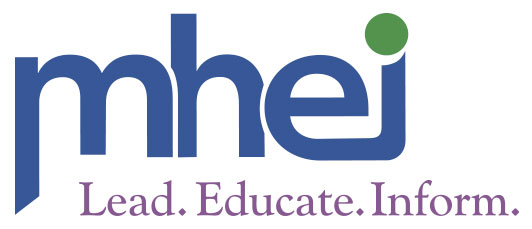Victor Frankenstein created his monster with a mix of pieces and parts.
The same approach is needed when doing the work of creating a healthcare leader—meaning there is no one trait or one thing that makes someone a leader.
Instead, our hospitals and health systems benefit when our leaders have the right blend of the proper mindset, heart, gut, backbone and more.
Here are a few of the parts that effective leaders need:
Mindset
There is no one algorithm or formula for creating a healthcare leader. People from varied backgrounds and with different skills and strengths can ascend to become leaders in their organizations. However, this role does require someone to think like a leader.
Thinking like a leader means:
Sometimes your only choice is between two “bad” options. Know it … and work with it.
You are bound to disappoint somebody(s) some of the time. No one can make decisions all day and satisfy everyone. The key is to gather as much information as you can and make decisions that are “informed.”
Knowing you are always “on stage.” Everything you do is seen by someone, filtered through their own paradigms and values until they reach a conclusion. Being “true” to yourself will serve you well when others’ values might be different than yours.
Heart
Leaders need a big heart but must have the strength to make decisions that can hurt. As healthcare leaders, we are driven by a mission of care. Patients, our top priority, are at the forefront of all our decision-making. Staff, those who care for our patients, are right up there as well. We must have compassion and empathy for those we serve and work with, but also must have the fortitude to make difficult decisions that will not please everyone. A coaching consultant once told me that having heart doesn’t necessarily mean doing what the individual is requesting, but rather listening to their needs and taking those needs into consideration when making decisions. Even tough decisions can be made with concern, compassion and “heart.”
Legs
Leaders need strong legs—runners’ legs—capable of going short distances fast but maintaining stamina over distances. How do we develop “legs” that can do both well? The key is understanding and acting in concert with the ebb and flow of the organization. When vision and planning are easy and accepted, we work toward the future. When our work on the future seems stalled, we focus on the short sprint—that “thing” we can get accomplished quickly. That “thing” that improves the life of just one person. We do this with the understanding that the world will change, and the organization will, once again, be open to working on a grander scale.
Gut
Healthcare leaders should trust their gut—with a caveat. Their gut instincts must be well informed. In this way, the gut must work in tandem with the brain. Collecting information is a brain activity. Knowing what has worked in the past is a brain activity. Knowing what is relevant and how much weight it holds is something that our gut can teach us. While separating our brain from our gut is useful to keep us from relying too heavily on one or the other, knowing how to balance them both is what makes our brain relevant and our gut informed.
Ears
Healthcare leaders need “big ears” willing to listen. Actively listening to people’s experiences, feedback and criticism, even when you can do nothing to change the situation, is central to creating a relationship with your co-workers and colleagues. Every year most hospitals measure the level of “engagement” present in their facility and departments. Since this has been occurring every year for several years it seems prudent to be proactive and continue the engagement (listening) throughout the entire year. Listening to issues and problems and saying, “I don’t know,” or, “Let me think about that,” is an acceptable activity for a leader and increases that leader’s credibility in the eyes of those who follow.
Eyes
How far in the future can you see? Our organization’s leaders most likely are able to keep their eye on short-term goals while visioning long-term outcomes and potential obstacles. Leaders—and healthcare leaders especially—need to use their eyes to take in what is happening around them. That always means being observant and aware. It also means seeing what “is NOT there.” It is easy to act on evidence but working without substantial evidence is enough for a good leader. Seeking enough evidence, in good faith, is what leaders should aim for.
Backbone
Effective leaders have a strong spine—or backbone. As a leader, you’re always going to be disappointing someone—sometimes yourself. And, because leadership never stops, it can feel like the weight of the organization is on your shoulders. A strong backbone capable of taking hits and standing up to the pressure is essential. To assist the leader in maintaining this strength we recommend being a part of a peer group—other leaders within your organization. Stop into their office once every week or two just to discuss the problem of the day, or the new change being implemented by the organization. There is strength in groups, and that strength helps every leader face the next challenge.
While there is no one right formula that creates a healthcare leader, these traits can help set a good foundation to bring leadership to life in your organization.
The Maryland Healthcare Education Institute offers year-round programming and on-site professional development to help build these leadership traits and more. For details, go to www.mhei.org.

